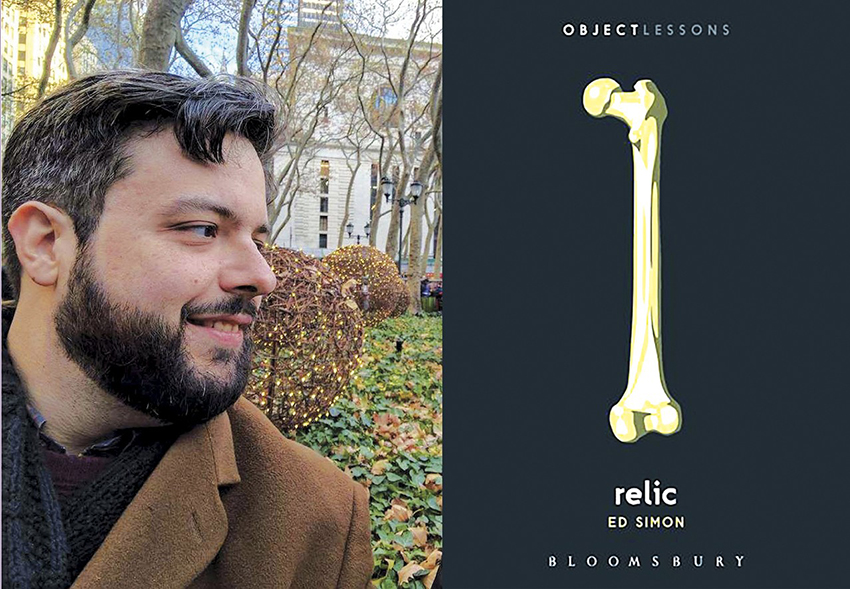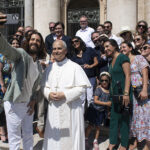Review: Relic, Ed Simon, Bloomsbury
In his short book Relic (part of the Bloomsbury Object Lessons series) Ed Simon doesn’t dwell much on the veracity of the miraculous qualities attributed to religious relics. He, like Carlos Eire in his book They Flew, is more interested in the sociological aspect of the Middle Ages belief in miracles. And he emphasizes the physical nature of relics: historically, and somewhat understandably, people want to see physical manifestations of the spiritual. While, in traditional doctrine, the soul animates the body, it is easier to relate to the spiritual through the material.
Luther, the provocateur, ridiculed the relic collection of his protector Frederick. Calvin, the pragmatist, warned that one couldn’t be sure one wasn’t venerating the bones of a non-saint. Simon comments on the medieval, but he is just as interested in the modern manifestation of the relic, which may not be named as such.
Modern people don’t keep body parts as relics, but the exception is Soviet Russia and the corpse of Lenin, which was embalmed explicitly as a replacement of religious saints. Marxists recognised that the secular state must take on some ‘aura of the religious’ to have authority.
Although we don’t expect miracles in their presence, there is a proliferation of relics in modern society, from the personal belongings of Keats held in Rome to the blood-splattered wire glasses of John Lennon, exhibited at the Rock’n’roll Hall of Fame. There are the clothes and Oscars of movie stars, the game jerseys of sports stars. The recent coronation of Charles featured what ‘may as well be’ relics: objects with power that is at least symbolic, even if some are of dubious providence.
Simon has a chapter on works of art as relics, why they are so venerated and why perfect reproductions aren’t. He argues that we come to such objects unable to disassociate ourselves from the history of the object itself, aesthetics aside. A copy is not the real thing, in other words, though Andy Warhol would challenge that take on art. Even so, Warhol also understood the power of the icon, and his celebrity portraits were executed with this in mind.
It could be argued too that the Bible often functions as a kind of relic – more symbol than ethical guide. Simon comments on the use of the Lincoln Bible in Barack Obama’s inauguration, and the symbolism is obvious in the way Trump uses the Bible – it’s fairly unlikely that he ever reads the thing and takes its advice to heart (in contrast to Obama), but he understands its symbolic power.

Simon comments that us moderns can sometimes see medieval people as ‘credulous simpletons’, but is there such a difference between believing in the power of relics and the acceptance of conspiracy theories that are rife currently, enabled by the internet? Alternatively, while Jesus was known as a miracle-worker, there was, in his ministry and the early church a pragmatic emphasis on the sacred within the physical, in the matter of seeing God in the marginalised that we are called to feed, clothe, and visit.
Nick Mattiske blogs on books at coburgreviewofbooks.wordpress.com and is the illustrator of Thoughts That Feel So Big.














